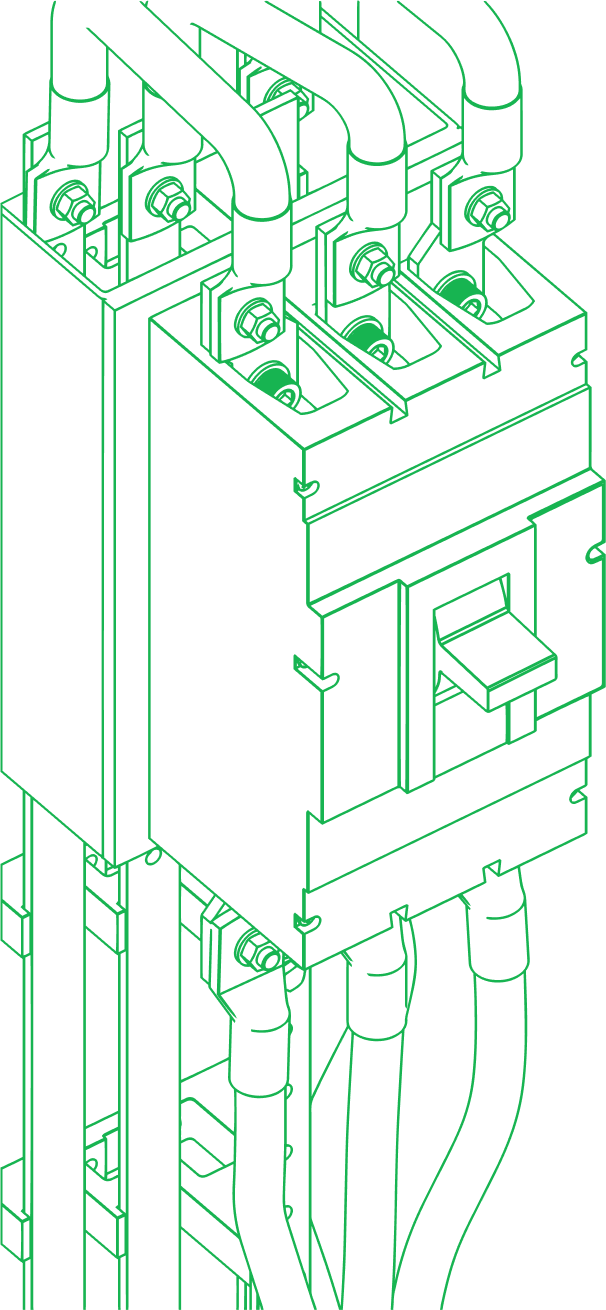Table of Contents
Remember in school when you zoned out for almost the whole class, and then the teacher said, “If you remember nothing else, remember this”?
This is that moment for RevOps.
If you’ve been half-listening when people explain revenue operations, now is the time to tune in. Because if your revenue model ends at closed-won, you’re missing most of the story. The Bowtie Model was the first big step forward. It gave us a way to see revenue after the sale.
The Revenue Performance Model (RPM) takes it further. It makes every part of the journey measurable inside your CRM.

Companies that put models like Bowtie and RPM into practice don’t just talk about RevOps. They grow revenue three times faster than the ones that don’t.
Start with a solid foundation—try HubSpot’s Free CRM today to centralize your data and power your RevOps journey.
This is an affiliate link. If you sign up through it, we may earn a commission at no extra cost to you.
Watch the full video series: Pavilion RevOps Course - with Brian Kreutz
TL;DR: Bowtie vs RPM
• Funnels stop at closed-won. That’s not enough.
• Bowtie fixed the problem by showing the full customer journey from awareness through renewal.
• RPM builds on Bowtie by making each stage measurable with volume, conversion, and retention metrics right in your CRM.
• The four levers of RevOps are Retention, Conversion, LTV, and Volume. Both Bowtie and RPM highlight them, but RPM turns them into math you can track.
• If you are not tracking time between stages, you don’t know where your bottlenecks are.
• Bowtie gives you the structure. RPM gives you the proof. Together, they make RevOps something you can scale.
Why do traditional revenue models fail and how do the Bowtie Model and RPM fix the gaps?
Every company wants sustainable revenue growth, but most still lean on outdated models that stop at closed-won. Funnels and flywheels both helped us think differently, but they don’t give teams the data needed to manage revenue in real time. The Bowtie Model was the first real fix because it extended the journey into retention. The Revenue Performance Model (RPM) builds on that foundation by making each stage measurable inside your CRM.
For fast-moving teams, the Starter Customer Platform – Monthly ($20/user/mo) gives you CRM + marketing + sales + service all in one place.
This is an affiliate link. If you subscribe through it, we may earn a commission at no extra cost to you.
The funnel? It stops at closed-won. Great for tracking pipeline, but blind to retention and expansion.

The flywheel? It shifted focus to customer engagement, but without measurable conversion points it’s hard to optimize.

The Missing Piece?
72% of RevOps teams say revenue growth is their primary metric. The challenge isn’t ambition, it’s diagnosis. Bowtie gave us structure and visibility, but RPM makes it operational by tying funnel and flywheel stages directly to CRM data. That’s what turns insight into action.
What teams really need is a model that gives them:
-
End-to-end visibility from first touch to renewal (Bowtie’s strength).
-
Trackable volume, conversion, and retention metrics inside the CRM (RPM’s strength).
-
A repeatable system for optimizing the entire revenue journey.
Get all of this in one place with HubSpot Marketing Hub—your central engine for data, automation, and reporting.
This is an affiliate link. If you purchase through it, we may earn a commission at no extra cost to you.
This is where the Bowtie Model comes in.
How do the Bowtie Model and Revenue Performance Model work together in RevOps?
Want a full breakdown of how the BowTie Model, created by Winning by Design, works? Download this guide here for a visual representation of how it optimizes the entire revenue lifecycle.
The Bowtie gave RevOps leaders something the funnel never could: visibility into the full journey, from awareness all the way through retention and expansion. It put customer success at the center and reminded us that growth doesn’t stop at closed-won.
But Bowtie is just the structure. The Revenue Performance Model (RPM) takes that structure and makes it measurable inside the CRM — with defined volume metrics (V1–V13) and conversion rates (CR0–CR4) at each step. Together, they create a framework that isn’t just conceptual, but actionable.
How it Works
Growth Phase: Left Side (The Funnel) → Customer Acquisition
-
Awareness → Potential customers discover your brand. With RPM, this is tracked as sessions (V1) so you know exactly how much top-of-funnel attention you’re getting.
-
Education → They consume content and explore your offering. RPM follows them into leads (V2) and MQLs (V3), showing whether education efforts are moving the needle.
-
Selection → They engage in sales conversations. RPM measures SQLs (V4) and opportunities (V5), so you can see where good-fit prospects advance — and where they stall.
-
Commitment → The deal is closed. Bowtie celebrates a customer win; RPM locks it in as Closed Won (V6) and ties it to starting revenue (V7), grounding the celebration in hard numbers.
Retention & Expansion Phase: Right Side (The Fly Wheel) → Post-Sale Revenue Growth
-
Onboarding → Customers get activated and experience quick wins. Bowtie highlights activation; RPM quantifies the impact by tracking how fast time-to-value occurs.
-
Achieving Impact → They see measurable value from your solution. RPM brings in cross-sell revenue (V9) and upgrade revenue (V10) to show when value becomes expansion.
-
Recurring Impact → They renew, expand, and deepen their engagement. Bowtie focuses on the lifecycle; RPM measures it through churn (V12) and downgrades (V11) versus expansion.
-
Maximum Impact → They reach full revenue potential. RPM ties this directly into Net Revenue Retention (NRR), the real “holy grail” of recurring growth.
What Makes It Different?
-
Bowtie gave us full-funnel tracking. RPM adds full cross-object measurability, so every stage is tied to data in the CRM.
-
Bowtie pushed customer-centric focus. RPM goes further with diagnostic utility — you can identify not just where the problem is, but why it’s happening.
-
Bowtie introduced metric-driven decisions. RPM expands those metrics beyond lifecycle stages, covering recurring, non-recurring, and usage-based revenue types.
Together, Bowtie and RPM aren’t competing models. Bowtie framed the whole journey; RPM operationalizes it. One gave us the map, the other gives us the compass and mile markers.
How do the Bowtie Model and RPM work together across the four revenue levers?
Most businesses still think growth means “just add more leads.” The Bowtie Model taught us that wasn’t enough — that you also need to track retention, conversion, deal size, and lifetime value. It reframed growth as a system, not just a funnel.
The Revenue Performance Model (RPM) builds on that foundation by making each lever measurable in CRM data. Instead of theory, you get hard numbers that diagnose problems and show exactly where to act.
Here’s how Bowtie and RPM work together across the four levers:
1. Retention
-
Bowtie’s role: Keeps retention visible by extending the journey beyond closed-won into onboarding, impact, and renewal.
-
RPM’s role: Tracks churn (V12), downgrades (V11), cross-sells (V9), and upgrades (V10) to calculate Net Revenue Retention. Instead of just knowing churn exists, you know exactly how much revenue you lost, gained, or grew.
Key takeaway
Metric to Watch: CR5 → Churn Rate Reduction
Time Metric (∆t6) → Reduce time to renewal by improving customer engagement strategies.
Bad onboarding = high churn.
If customers don’t hit value fast, they leave. That’s why we offer two core services to solve it—each handling a different piece of the puzzle.
We set up your CRM for fast activation and smooth onboarding. From data imports to user training, everything is built to get your team (and your customers) to value, fast. 👇
HubSpot Technical Consulting
Beyond setup, we make sure your HubSpot instance actually works the way your business does. That means custom objects, advanced automation, clean data, and scalable infrastructure that keeps customers engaged long after onboarding. 👇
2. Conversion
-
Bowtie’s role: Lays out the stages from awareness to commitment, showing where prospects move or stall.
-
RPM’s role: Assigns conversion rates (CR0–CR4) to each handoff, so you can see precisely where the funnel leaks. Awareness to leads? Leads to MQLs? SQLs to opportunities? RPM turns Bowtie’s stages into percentages you can improve.
Key takeaway
Metric to Watch: CR1 → MQL to SQL Conversion Rate
Time Metric (∆t3) → Decrease sales cycle length with better automation and structured deal progression.
Leads stalling mid-funnel?
It’s not a lead problem—it’s a team alignment problem. When marketing and sales aren’t working from the same playbook, deals die in the middle. We fix that with two connected services:
Fractional RevOps Services
We bring you a dedicated RevOps team that aligns your tech, data, and processes across marketing, sales, and CS. No more silos—just one revenue system driving the whole funnel. 👇
Allbound Marketing
We connect inbound and outbound into one coordinated GTM motion. That means the right message, to the right buyer, at the right time—so leads don’t just show up… they convert. 👇
3. Deal Size & LTV
-
Bowtie’s role: Brings attention to long-term value creation beyond acquisition.
-
RPM’s role: Quantifies it by linking revenue objects in the CRM. You can measure expansion revenue (V9 + V10) versus lost revenue (V11 + V12), making lifetime value more than a concept — it becomes a math model you can report on quarterly.
Key takeaway
Metric to Watch: M7 → LTV Growth Rate
Time Metric (∆t7) → Reduce time to expansion by identifying upsell opportunities earlier.
You’re closing deals—but are you maximizing their value?
🔧 Solution:
HubSpot Integrations + HubSpot Migrations – Sync sales, CS, and finance data to surface upsell opportunities and automate expansion.
4. Volume
-
Bowtie’s role: Frames the journey as stages, so teams know what volume should look like at each level of the funnel and flywheel.
-
RPM’s role: Collects real numbers for each stage — sessions (V1), leads (V2), MQLs (V3), SQLs (V4), opportunities (V5), and closed-won deals (V6). Instead of “we need more volume,” you can pinpoint where you need it and whether the quality is strong enough to sustain revenue growth.
The takeaway? Bowtie gave RevOps the four levers. RPM shows the math behind each lever so you know whether to push harder, fix a leak, or replicate a win.
Key takeaway
Metric to Watch: M1 → Lead Volume Growth
Time Metric (∆t1) → Shorten lead qualification time with better automation and AI-based lead scoring.
Now that the machine is running, it’s time to scale—without breaking it.
🔧 Solution:
HubSpot DIY – A step-by-step implementation guide that lets you take control of your HubSpot setup, so you can scale with efficiency, not chaos.
Why are time metrics essential and how does RPM make them operational?
Revenue growth isn’t just about how much you generate, it’s about how fast you generate it. That’s where time metrics come in.
Bowtie’s role: The Bowtie Model introduced ∆t as a way to measure speed between stages. It showed that revenue leaks aren’t always about volume or conversion. Sometimes the problem is lag. Too long to book a meeting? Deals slow-walking through the pipeline? Customers taking months to see value? Bowtie gave RevOps leaders a stopwatch to see the hidden drag on revenue.
RPM’s role: The Revenue Performance Model takes those ∆t concepts and makes them operational. Each time metric gets tied directly to CRM data so you can track it in real time — not just in theory.
Here’s how it looks in practice:
-
Δt1 – Engagement lag: RPM connects sessions (V1) to leads (V2), showing exactly how long it takes site traffic to turn into hand-raisers.
-
Δt2 – Prospecting length: By linking leads (V2) to MQLs (V3), RPM shows if campaigns are dragging or producing timely results.
-
Δt3 – Sales cycle kickoff: Tracks MQLs to SQLs (V3 → V4) and opportunities (V5) to show how fast buyers are moving into serious conversations.
-
Δt4 – Full sales cycle: Measures opportunities (V5) to closed-won (V6). No more guesswork — you see the real cycle time across teams.
-
Δt5 – Time to live: Ties onboarding activities directly to CRM objects so you know how long it takes for customers to get value.
-
Δt6 – Time to impact: Tracks when customers actually achieve the outcomes promised, linking deals to product adoption or CS milestones.
-
Δt7 – Account penetration: Goes beyond renewal to see how fast existing accounts expand into cross-sell and upsell revenue.
The difference is simple: Bowtie showed you that time matters. RPM shows you where it matters, how much it matters, and what to do about it.
When you can see both the stopwatch (time) and the scoreboard (volume + conversion), you finally know whether the issue is speed, quality, or quantity — and that’s when you can fix the right problem.
THIS is RevOps and Why RPM is the Next Step
If you’re not tracking retention, conversion, deal size, volume, and time, you’re not really doing RevOps. That’s the baseline, and the Bowtie Model gave us the first clear map for it.
But a map alone isn’t enough. You also need a model that works inside your CRM, makes every stage measurable, and ties actions directly to revenue outcomes. That’s where the Revenue Performance Model comes in.
Think of Bowtie as the blueprint...it showed companies how to look at revenue across the entire journey. RPM is the build-out...it installs the structure into your systems, connects it to real data, and gives you the math that explains what’s happening and why.
With RPM layered on top of Bowtie, you’re not just looking at the customer journey. You’re following the money, tracking what drives growth, and diagnosing problems before they turn into missed targets.
That’s RevOps done right. And if you’re ready to move past theory and put it into practice, RevPartners can get you there.
Predictable, repeatable, scalable revenue starts when you make the shift from seeing the journey to measuring the performance.

.png?width=2986&height=2233&name=RPM%20PDF%20Preview%20(2).png)







-1.png)
